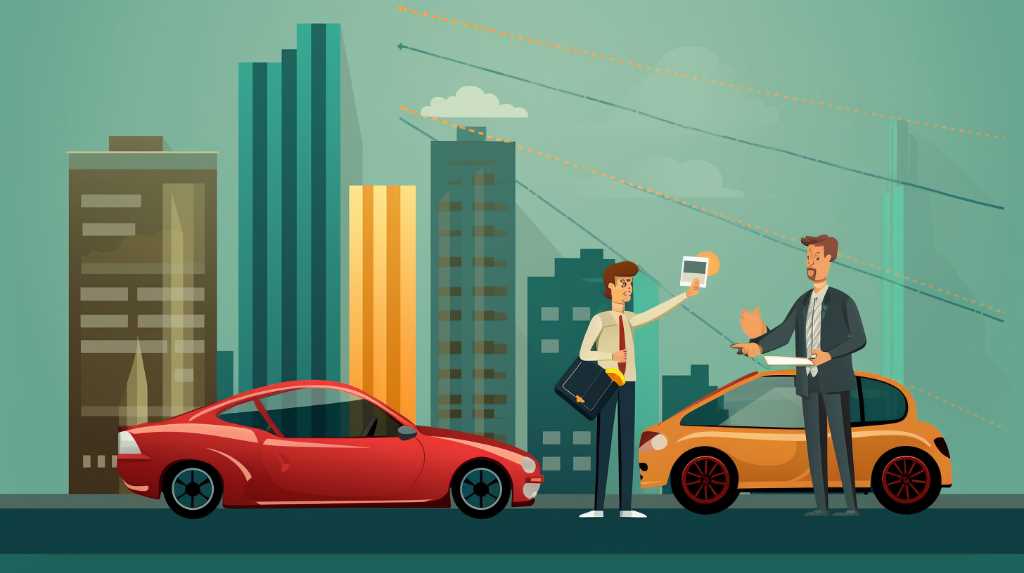
Many people with car insurance worry if their rates will go up after an accident that wasn’t their fault. A ‘no-fault’ accident means you did not cause the crash. But, even then, drivers often ask if their insurance payments will increase after such an incident.
The answer isn’t simple because it depends on several things like the details of your insurance policy, if you’ve made claims before, and the rules in your state. It’s really important for you to understand your insurance policy well and know how a no-fault accident might impact how much you pay and your coverage in the future.
Understanding No-Fault Insurance
Within the framework of no-fault insurance systems, policyholders receive compensation for minor injuries from their own insurance company, regardless of who is to blame for the accident. This approach aims to streamline the claims process and reduce the burden on the court system by limiting litigation.
No-fault policies typically cover medical expenses, lost income, and costs for essential services, irrespective of fault. However, there are thresholds for the severity of injury or the cost of damages before a claimant can pursue a legal case against the at-fault party.
The operational premise of no-fault insurance resides in its ability to deliver prompt financial support to the insured, thereby fostering a more efficient resolution to the aftermath of automotive mishaps.
Factors Affecting Insurance Rates
Insurance companies look at several things to decide how much you pay for insurance. They check your driving history, what kind of car you have, and where you live. For example, if you’ve never had a car accident, you might pay less. But if you drive a sports car, you might pay more because it’s seen as riskier.
If you live in a big city with lots of traffic, there’s a higher chance you might get into an accident, so your insurance could cost more. But if you live in the countryside where there are fewer cars, you might pay less. Also, if you’ve made a lot of insurance claims in the past, even if an accident wasn’t your fault, that could make your rate go up.
All these details add up to create a risk profile. Insurance companies use this profile to figure out how much to charge you. For example, if you’re a safe driver with no claims and you live in a quiet area, you’ll likely have a lower risk profile and pay less for insurance.
The Impact of State Laws
The laws in each state can change how much you pay for car insurance after an accident you didn’t cause. Different states have different rules for insurance companies when dealing with accidents. In places where ‘no-fault’ laws are in place, your insurance usually pays for your damages, no matter who caused the accident. This can help keep your insurance costs from going up. But, if you often file claims, your insurance company might still increase your rates, thinking you are more likely to have accidents.
On the other hand, in states where the driver who caused the accident is responsible, that driver’s insurance costs might go up. Some states also have laws that protect you by limiting when your insurance can charge you more. It’s important to know the insurance laws in your state so you can understand why your insurance costs might change after an accident.
Protecting Your Insurance Premiums
Even if an accident isn’t your fault, it might not raise your insurance cost right away. But if you want to keep your rates from going up later, there are steps you can take.
Keeping a clean driving record is really important because it’s a big part of how your insurance price is figured out. If you take a defensive driving class, you could get better at staying safe on the road, and your insurance company might even give you a discount.
Also, make sure to check your insurance policy often to see that you’re not paying for more coverage than you need and to ask about discounts if your car has safety features or if you don’t drive much. It’s a good idea to see what other insurance companies are charging once in a while. If you find a better deal, it can help keep your current insurance from becoming too expensive.
Navigating Post-Accident Procedures
After a no-fault car accident, promptly reporting the incident to your insurer is an essential step in maintaining your insurance premiums and facilitating the claims process. This immediate communication allows for an accurate record of events and helps protect against unwarranted premium increases.
As you navigate post-accident procedures, it is imperative to collect and present all relevant documentation, including police reports, witness statements, and photographic evidence. These materials support your no-fault claim and aid insurers in determining liability accurately.
Understanding the specific terms of your insurance policy is also crucial; it will provide insight into coverage limitations and the impact of claims on your rates. Keeping a meticulous record of the entire process ensures transparency and can be instrumental if disputes arise.
Conclusion
To sum it up, your car insurance rates might go up even if you’re in an accident and it’s not your fault. This can happen for different reasons, like the rules of your insurance company, your past driving record, and the laws in your state.
Even though no-fault insurance is supposed to protect you from higher rates after an accident, that doesn’t always happen. It’s important to know what your insurance covers and to keep an eye on your policy so you don’t end up paying more after an accident that wasn’t your fault.